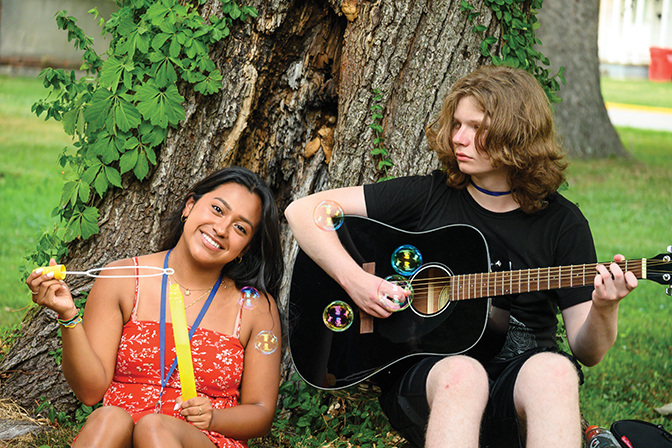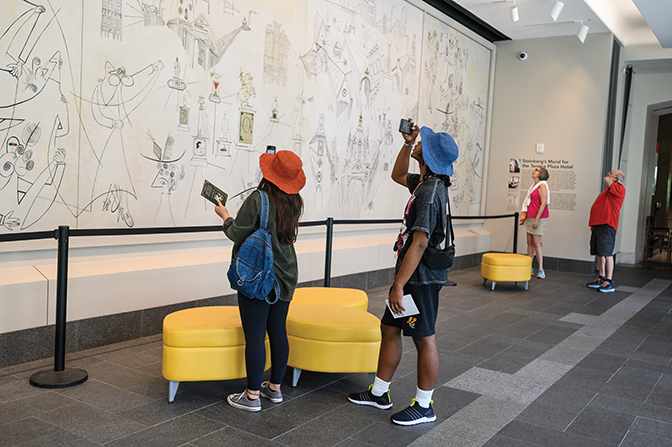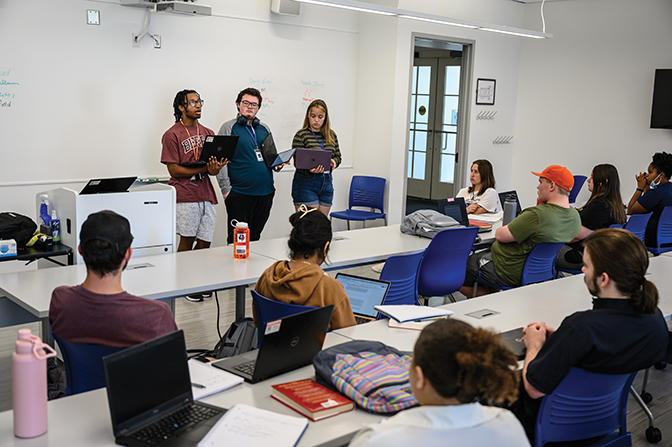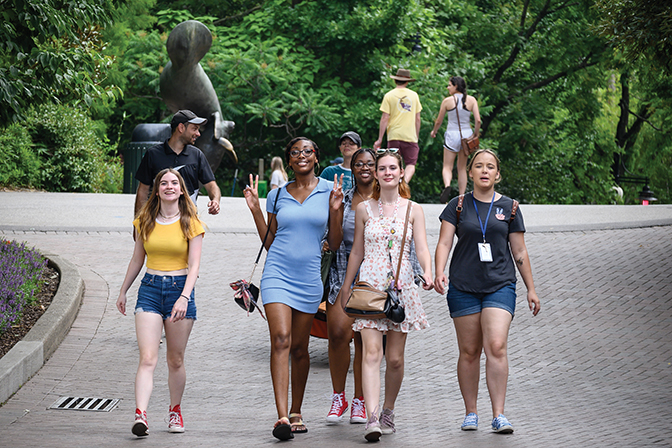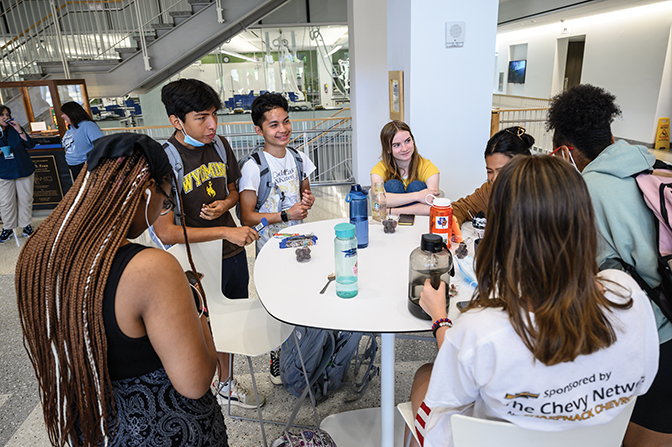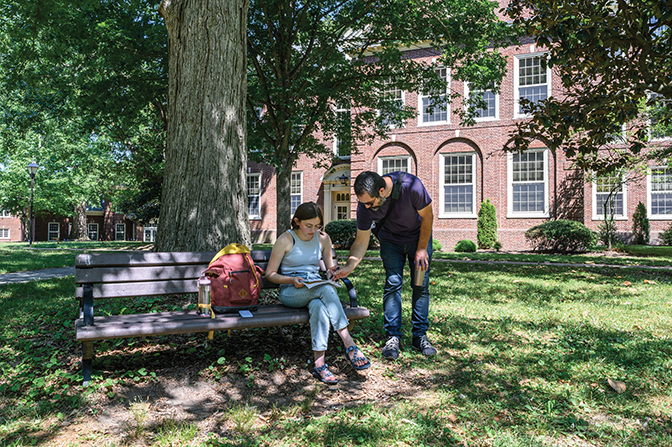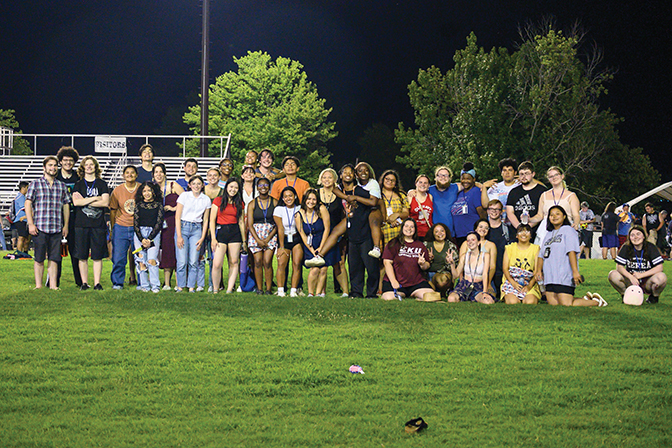For even the best students, transitioning from high school to college can be a challenge. They are moving from highly structured lives at home and school, with adult direction and limited choices, to a new world where they’re suddenly the boss of themselves. They don’t have to go to class if they don’t want to. They don’t have to study. They set their own schedules, choose when to sleep in, when not to. Every day, there are decisions to make.
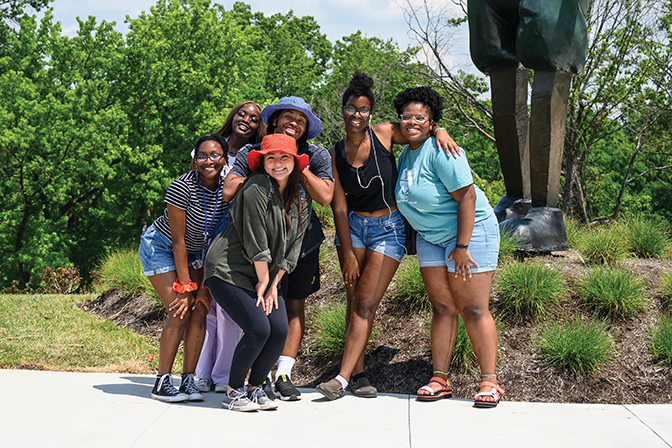
The situation of a young adult in an unfamiliar, unstructured world with seemingly unlimited options can be stressful because what to do is not at all clear. This has been called “the quarter-
life crisis.” It can lead a good student to drop out of school. The Bridge program at Berea College was created to prevent that from happening and to help newly admitted students succeed by inviting them to a kind of summer preview.
Dr. Sarah Adams, assistant professor of General Studies, is the director of Berea Bridge and leads the effort. She says there are two main goals: help students succeed academically and make them feel they belong.
Each year, 60 incoming students are selected via lottery to attend Bridge for a month starting in June. The lottery is not completely random—there are controls to ensure the group is representative. Students coming from far away are provided with transportation at no cost to them. Students receive a stipend to help cover expenses. A trip for supplies is made weekly. They also are provided with a high-quality backpack, one that won’t fall apart right away.
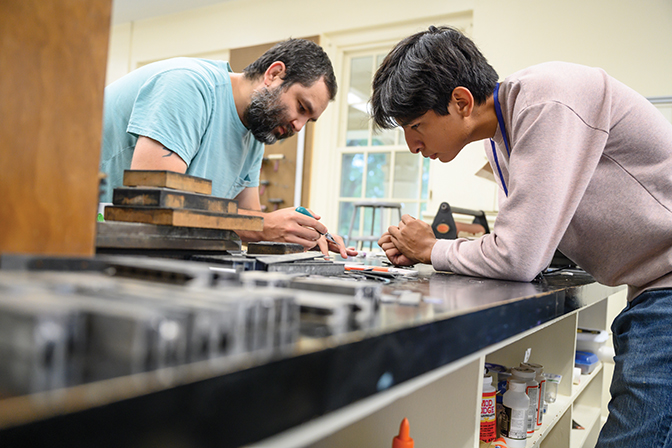
Students take two classes during Bridge and put in about six hours per week at a campus job. Last year, Bridge offered a physics of music course. In Summer 2023, a chemistry of art class was offered. The experience is highly structured and scheduled and helps students get a feel for the reality of attending college in the fall. It also helps them understand that, though each of them is a very special student who has achieved great success so far, college is a different ballgame.
“Since I’ve started teaching here,” Adams said, “I’ve had more valedictorians and salutatorians in my classes—students at the top of their high schools. They come to college, and the expectations are different. It’s more intense, and those students sometimes experience their first academic stumbling blocks.”
Since I’ve started teaching here,” Adams said, “I’ve had more valedictorians and salutatorians in my classes—students at the top of their high schools. They come to college, and the expectations are different. It’s more intense, and those students sometimes experience their first academic stumbling blocks.
Dr. Sarah Adams
A long time ago, a time students today often call “back in the 1900s,” there was a thing known among (male) college students as “the gentleman’s C.” It represented a good, honest effort at something very difficult. Valedictorians and salutatorians, though, tend to not be familiar with the concept. In college, they may be coming across a letter like that for the first time, and it can affect their sense of self.
The Bridge program both challenges them and connects them to support. They connect with professors and advisors. There are student-teaching assistants who live in residence halls with them, who also can connect them to campus services like Writing Resources. The program also focuses on successful academic strategies: not just taking notes but knowing when to take notes, not just reading a textbook but how to read one and how it’s different from reading a newspaper article. Bridge gives students a realistic sense of what college is going to require of them.
“We require a study hall because we hope students get the idea they need a study routine,” Adams explained. “Once August hits, it might look like you have seven hours of free time in the evening, but it’s not actually free time if you do all the studying that needs to be done. So, we build that into Bridge.”
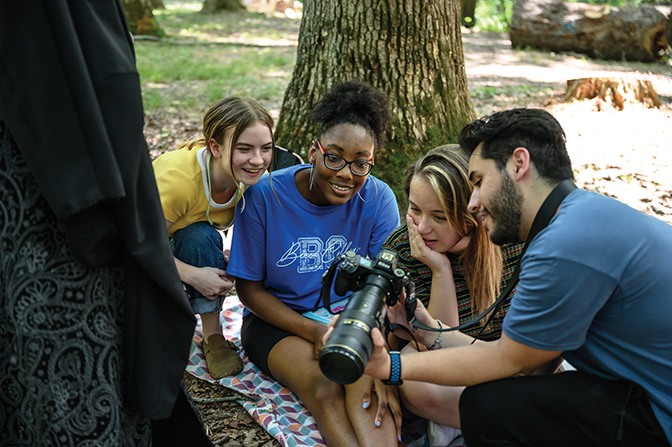
The Bridge student’s day and week are quite structured and quite busy. Monday through Friday, their day starts at 7:30 a.m. and runs until 8:30 p.m. That includes meals, classes, breaks, work, exercise, workshops, free time and study sessions. The weekends are looser but filled with opportunities like hiking, canoeing, caving, painting classes, and visits to art museums, escape rooms, zoos and baseball games. They have Sundays to themselves.
“The teaching assistants and resident assistants lead more casual activities like movie night or basketball games,” Adams said. “Karaoke is the biggest hit. They love their karaoke night.”
Students bond, find belonging among each other despite differences, but also have the opportunity to connect to more familiar things. Once a week, they can have dinner with faculty, staff and students at the various centers on campus, like the Willis D. Weatherford Jr. Campus Christian Center, the Espacio Cultural Latinx, the Loyal Jones Appalachian Center, and others.
At Bridge, the whole student is considered. Counseling Services comes in, explains available resources, reminds students to breathe and teaches them how to release body tension, how to get their endorphins going and how to deal with homesickness.
The goal is academic and social success, and part of achieving that goal is understanding or redefining what success means.
“I don’t mean a 4.0 grade-point average,” Adams said. “That’s not most students. I was not a 4.0 kind of college student. I mean successful and engaged, happy, interested students. Part of what we see from our most successful students is that they’re willing to take risks.”
As she explored other measures of success, Adams noted how the program transforms students. She sees these Bridge students at the beginning of the month and at the end of the month. They come in nervous and alone. They leave crying and hugging, happy and ready to find success at Berea College.
